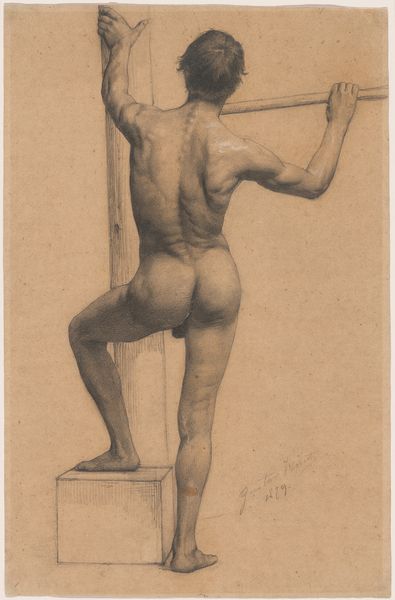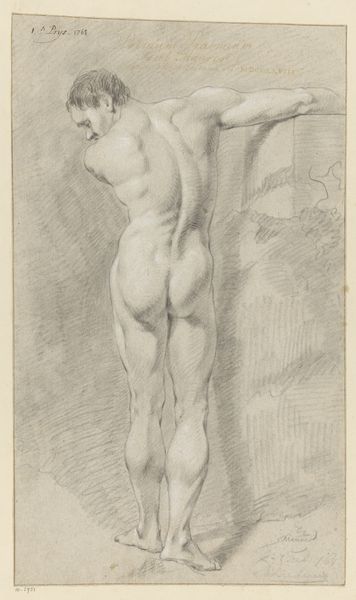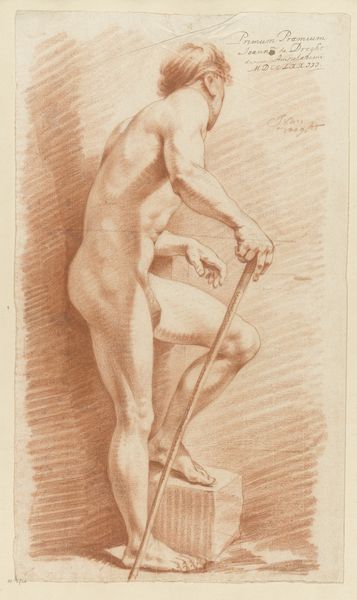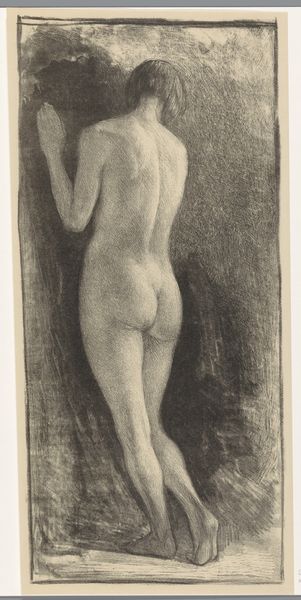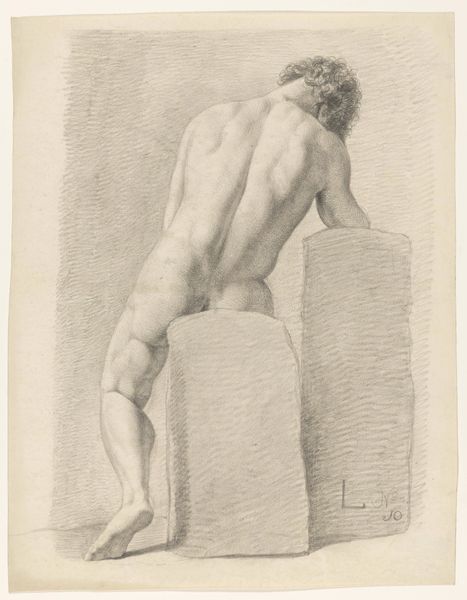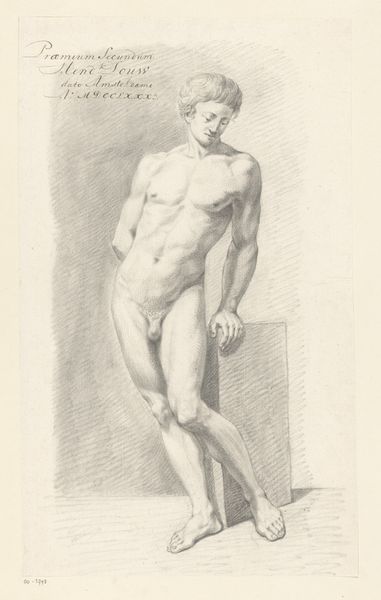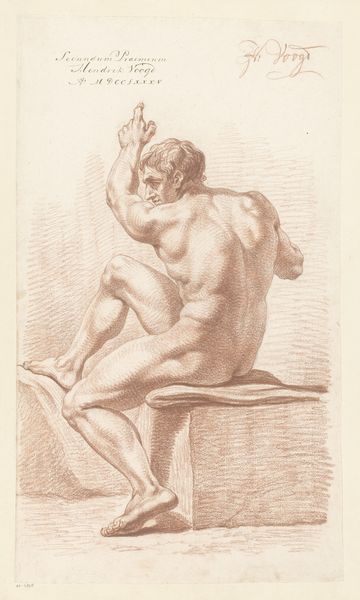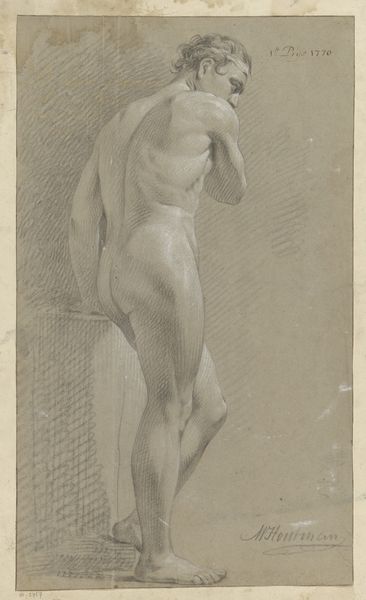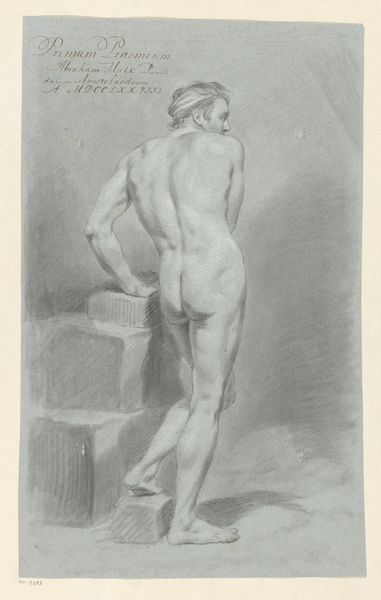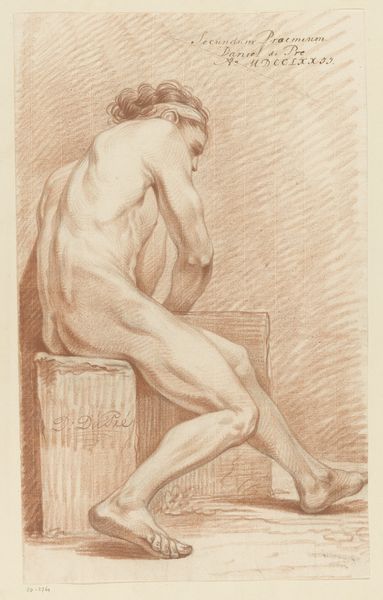
drawing, pencil
#
portrait
#
drawing
#
charcoal drawing
#
pencil drawing
#
pencil
#
academic-art
#
nude
#
graphite
Dimensions: height 515 mm, width 293 mm
Copyright: Rijks Museum: Open Domain
Curator: Here we have a drawing titled "Staand mannelijk naakt met zwaard," or "Standing Male Nude with Sword," likely created between 1854 and 1914, now residing here at the Rijksmuseum. Editor: Striking! The use of graphite really emphasizes the musculature, though the overall tone gives it an almost melancholic air. What a powerful contrast. Curator: Indeed. Considering the academic art style, it’s intriguing to think about this nude figure’s place in society during this period. Albert Neuhuys, as the artist, was working within a context where the male nude served both as a subject of idealized form, but it could also speak to cultural and social issues when depicting an armed subject in a non-classical style. The tools he used to render this drawing – pencil and charcoal – would have been relatively accessible, inviting considerations of mass production and artistic dissemination at the time. Editor: The precise gradation of shading catches my eye. Look at the light catching the deltoids and obliques—masterful. And note the dramatic tension created by that leaning sword; it bisects the composition and yet maintains balance. The artist displays a confident control over chiaroscuro to shape and model form. Curator: Precisely, and the drawing allows us to appreciate Neuhuys’ command of his materials, too. The smooth blending of the graphite across the paper, compared to the starker contrast afforded by the charcoal around the cube. These differences in material interaction also reveal a social hierarchy in how art was learned in the Academy and the marketplace where artists were consumers of these art supplies. Editor: Even the negative space becomes active! The artist uses the pale paper to define the figure's contours, and it contributes to this pensive, almost fragile, mood that prevails. It's the strategic deployment of emptiness that allows us to read the solidity of form. Curator: Absolutely, and thinking about the drawing in the context of Dutch art production in the 19th century, Neuhuys’ use of graphite suggests more than a simple artistic choice. It implies deliberate cost management or an educational assignment and a desire to broaden participation by inviting consumers into a market built around these technologies. Editor: Thinking about the pure formalism then, the dynamism found in the composition generates its unique viewing experience—an approach concerned solely with line, tone, shape. The artist really activates his chosen media to shape our experience! Curator: Considering all, Neuhuys’ choices – materials, subject, style – offer insights into the socio-economic realities shaping artistic creation and consumption in 19th-century Netherlands. Editor: I see how an application of visual language informs and activates experience. It really emphasizes the need for continual decoding!
Comments
No comments
Be the first to comment and join the conversation on the ultimate creative platform.
